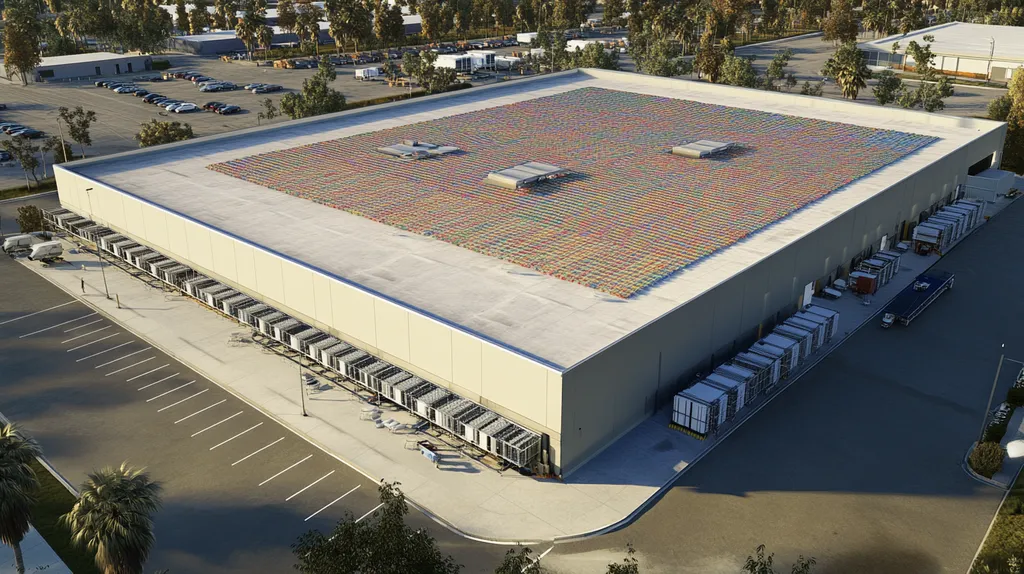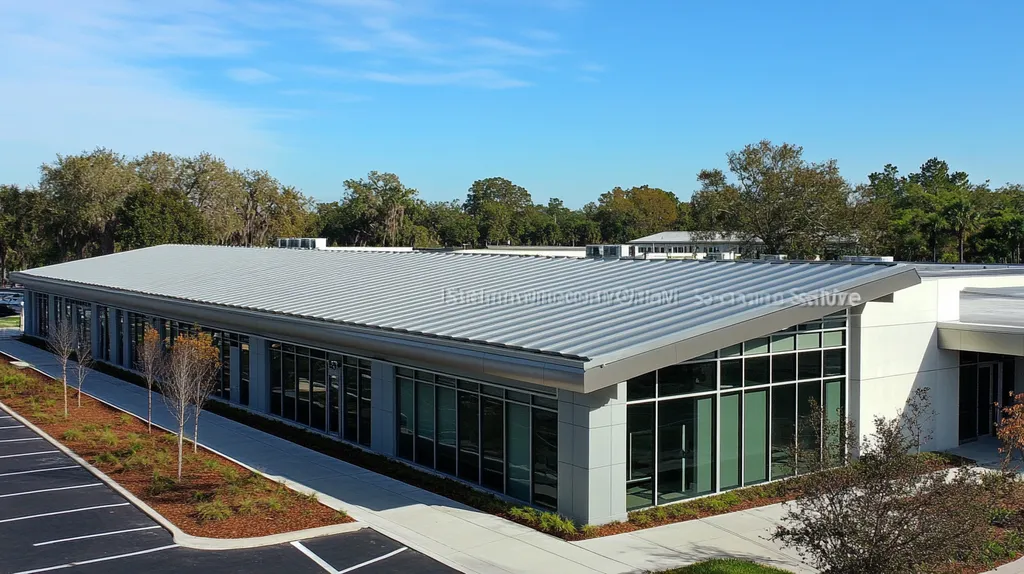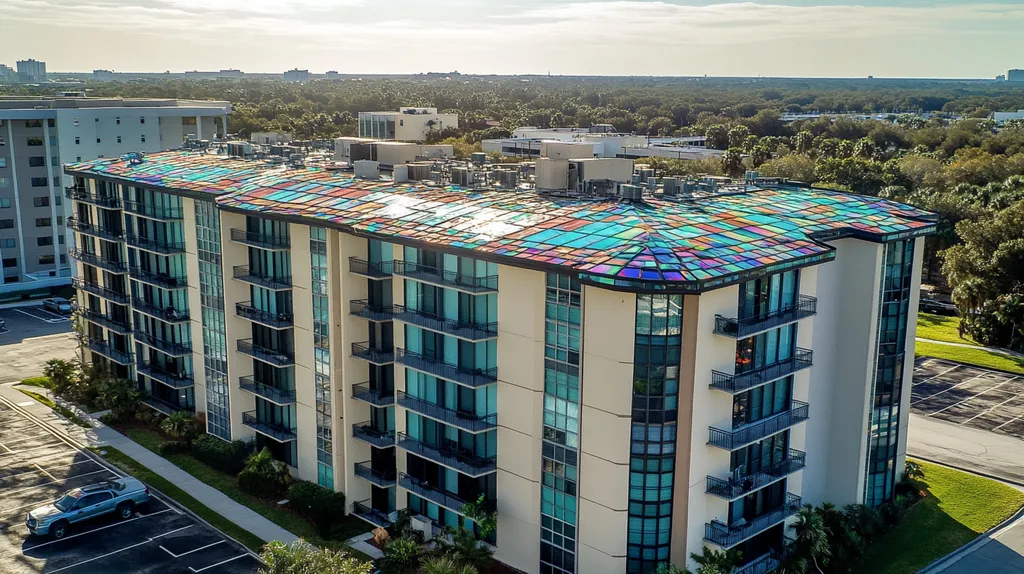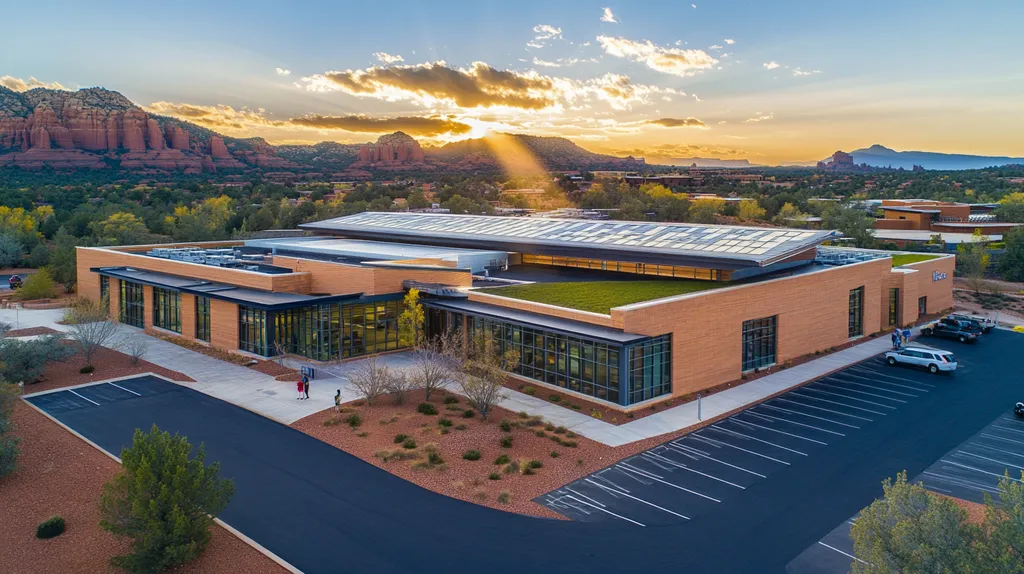In commercial roofing, proper contractor certification stands as the critical line between project success and catastrophic failure. Industry data shows that buildings with uncertified contractors face a 47% higher risk of premature roof failure, resulting in millions in damage annually.
For facility managers and property owners, understanding roofing certifications has become essential as manufacturers increasingly require certified installers to maintain warranty coverage.
This comprehensive guide examines the vital role of contractor certifications, from basic requirements through advanced specializations, helping decision-makers protect their roofing investments and ensure long-term building performance.
SECTION 1: THE BASICS EXPLAINED
When it comes to commercial roofing, proper certification can mean the difference between a watertight installation and costly failures. Every year, buildings suffer millions in damage from improperly installed roofing systems. Understanding contractor certifications helps facility managers avoid these pitfalls while ensuring their buildings receive expert care from qualified professionals.
What It Is (In Plain Language)
Commercial roofing certifications are formal credentials that verify a contractor’s expertise and capability to handle large-scale roofing projects. These certifications demonstrate that contractors have mastered specific systems, materials, and installation techniques through rigorous training and testing.
Commercial roofing licenses require contractors to demonstrate significant experience, maintain proper insurance coverage, and pass comprehensive examinations. This ensures they possess both theoretical knowledge and practical skills needed for complex projects. (source: JobNimbus)
Major manufacturers like GAF, Firestone, and Carlisle offer their own certification programs. These programs teach contractors the precise specifications and techniques required for installing their roofing systems.
Third-party organizations also provide independent certifications focusing on broader industry standards. These credentials verify expertise in areas like energy efficiency, sustainable design, and safety protocols.
Why It Matters (To Your Building)
Certified contractors bring critical expertise that directly impacts a building’s performance and longevity. Their specialized training helps prevent common installation errors that lead to leaks, energy loss, and premature system failure.
Many premium roofing materials require certified installers to maintain warranty coverage. Without proper certification, even minor installation errors can void manufacturer warranties, leaving building owners exposed to significant replacement costs.
Certified contractors stay current with evolving building codes and industry standards. This knowledge ensures installations meet local requirements and incorporate the latest safety and performance improvements.
Buildings with properly installed roofing systems typically experience fewer maintenance issues and longer service life. This translates to lower total ownership costs and better protection for valuable building contents.
How It Works
The certification process begins with extensive classroom and hands-on training. Contractors learn proper installation techniques, safety procedures, and troubleshooting methods for specific roofing systems.
Written examinations test knowledge of building codes, material specifications, and installation requirements. Many programs also require field testing where contractors demonstrate practical installation skills.
Most certifications require regular renewal through continuing education. This ensures contractors maintain proficiency and stay informed about new materials and techniques.
Manufacturers and certification bodies maintain oversight through periodic inspections and quality reviews. This ongoing monitoring helps maintain high installation standards and identifies areas for improvement.
SECTION 2: PRACTICAL APPLICATIONS
Commercial roofing failures can devastate businesses, with repair costs often exceeding six figures. Industry data shows that improper installation by uncertified contractors leads to 70% of premature roof failures. Understanding the practical applications of contractor certifications helps facility managers protect their investments and ensure their roofing projects deliver lasting value.
Common Uses & Examples
Contractor certifications play a vital role in every phase of commercial roofing, from initial system selection through final inspection. The National Roofing Contractors Association (NRCA) ProCertification program serves as an industry benchmark, validating expertise through rigorous testing of both technical knowledge and hands-on skills. (source: Roofers Guild)
System-specific certifications ensure contractors understand the unique requirements of different roofing materials. This expertise prevents common installation errors that lead to premature failures in TPO, EPDM, modified bitumen, and other commercial systems.
Quality assurance certifications verify that contractors follow proper inspection protocols throughout installation. These programs require detailed documentation of each project phase, creating accountability and ensuring specifications are met.
Safety certifications demonstrate a contractor’s commitment to protecting workers and building occupants. These credentials verify proper training in fall protection, equipment operation, and hazard mitigation.
When You Need It Most
New construction and complete roof replacements demand certified contractors due to their complexity and long-term impact. These projects require extensive knowledge of building codes, material compatibility, and proper sequencing of work.
Emergency repairs following severe weather events necessitate certified contractors who can quickly assess damage and implement lasting solutions. Their expertise helps prevent temporary fixes that lead to recurring problems.
Building expansions and renovations require certified contractors to ensure proper tie-ins between existing and new roofing systems. This prevents weak points where leaks commonly develop.
Warranty claims and insurance repairs mandate certified contractors to maintain coverage. Using uncertified contractors for these repairs often voids existing warranties and complicates insurance settlements.
Interactions With Other Systems
Certified contractors understand how roofing decisions impact HVAC efficiency. They ensure proper installation of curbs, penetrations, and flashings that maintain the building’s thermal envelope.
Drainage system integration requires certified contractors who can calculate proper slopes and verify adequate water removal. This prevents ponding that accelerates membrane deterioration and overloads structural systems.
Lightning protection and electrical systems demand certified contractors familiar with proper grounding techniques. This expertise prevents penetrations that compromise roof integrity while maintaining safety systems.
Building automation and monitoring systems rely on certified contractors to properly install sensors and access points. Their knowledge ensures these components enhance rather than compromise roof performance.
SECTION 3: KEY TERMINOLOGY DECODED
Clear understanding of roofing terminology directly impacts project success and building protection. Each year, miscommunication around technical terms leads to millions in preventable damage and project delays. Without proper knowledge of industry-specific language, facility managers risk making decisions that compromise roof integrity and safety while potentially voiding warranties.
Essential Terms Explained
State licensing requirements vary significantly across regions, with some requiring extensive credentials while others maintain minimal standards. Alabama, for instance, requires contractors to have a Designated Qualifying Representative (DQR) and maintain both liability insurance and permit bonds, though no formal education requirements exist. (source: Jobber)
“R-value” measures thermal resistance in roofing materials, with higher values indicating superior insulation properties. Understanding this metric helps facility managers evaluate energy efficiency and potential utility cost savings.
Single-ply membranes like TPO (Thermoplastic Olefin) and EPDM (Ethylene Propylene Diene Monomer) represent modern roofing technologies. These materials offer distinct advantages in durability, installation efficiency, and environmental performance.
“Substrate” refers to the surface beneath roofing materials, typically consisting of deck, insulation, and cover board layers. Its condition directly affects system performance and longevity.
Industry Jargon Translated
“Penetrations” describe any objects passing through the roof membrane, such as pipes, vents, or equipment supports. Each penetration requires proper flashing and sealing to maintain watertight integrity.
“Uplift resistance” indicates a roof system’s ability to withstand wind forces trying to separate it from the building. This measurement becomes critical in areas prone to severe weather events.
“Positive drainage” means water flows freely to drains without ponding. Poor drainage accelerates material degradation and can void manufacturer warranties.
“Detail work” encompasses the specialized installation techniques required around roof features like corners, edges, and equipment. These areas demand extra attention as they’re common failure points.
Measurement & Units Simplified
A “square” equals 100 square feet of roof area, serving as the standard unit for material ordering and cost estimation. Understanding this measurement prevents ordering errors and budget overruns.
“Mil thickness” measures membrane material in thousandths of an inch. This specification affects durability and performance, with thicker materials generally offering greater protection.
“Slope” describes roof pitch, typically expressed as rise over run in inches. Proper slope calculation ensures adequate drainage and prevents water accumulation.
“Load capacity” refers to the maximum weight a roof structure can safely support. This measurement includes both dead loads (permanent weight) and live loads (temporary weight from maintenance, equipment, or weather).
SECTION 4: DECISION FACTORS
When evaluating commercial roofing contractors, decision-makers face choices that impact building performance for decades. Studies show that improper contractor selection leads to premature roof failures in 47% of cases, while appropriate certification reduces failure rates to less than 5%. Understanding the key decision factors helps facility managers protect their investments and avoid costly mistakes that can cascade through entire building systems.
Cost Considerations
Commercial roofing certifications offer different tiers that directly impact project costs and quality assurance. Higher certification levels require specialized training, insurance requirements, and demonstrated expertise that can significantly reduce long-term expenses. (source: GAF Blog)
Initial bids from certified contractors may appear higher than uncertified alternatives. However, these costs typically include superior materials, proper preparation, and detailed quality control processes that prevent future problems.
Extended warranties and manufacturer guarantees available through certified contractors provide valuable protection. These warranties often cover both materials and workmanship, offering comprehensive coverage that uncertified contractors cannot match.
Labor costs vary significantly between certification levels, reflecting the expertise and specialized training required. Premium certifications demand ongoing education and quality monitoring that ensures consistent installation standards.
Performance Trade-offs
Different certification programs emphasize various aspects of roofing performance. Some focus on energy efficiency and sustainable materials, while others prioritize durability and weather resistance.
System-specific certifications ensure contractors understand the unique requirements of particular materials. This specialization prevents compatibility issues that often plague mixed-material installations.
Regional certifications address local climate challenges and building code requirements. These credentials verify that contractors can handle specific environmental conditions affecting roof performance.
Quality assurance certifications mandate regular inspections and documentation throughout installation. This oversight prevents shortcuts that compromise long-term performance.
Lifespan & Durability Factors
Certified contractors understand how installation quality affects system longevity. Their expertise helps prevent common failures that reduce roof lifespan by up to 40%.
Material-specific certifications ensure proper handling and installation of advanced roofing systems. This expertise prevents damage during installation that could compromise long-term durability.
Maintenance requirements vary significantly between roofing systems and installation methods. Certified contractors can recommend appropriate maintenance schedules that maximize system lifespan.
Environmental factors impact durability differently across roofing systems. Certified contractors evaluate these conditions to recommend materials and installation methods that ensure maximum service life.
SECTION 5: COMMON CHALLENGES
Commercial roofing certification challenges threaten project success rates across the industry, with improper credentials leading to $3.7 billion in annual damage from failed installations. Studies show that 40% of commercial roof failures stem from inadequate contractor certification verification. These issues cascade through projects, compromising structural integrity, voiding warranties, and creating long-term liability exposure for property owners.
Frequent Problems & Solutions
The National Roofing Contractors Association (NRCA) PROCertification program establishes clear standards for installation excellence, helping facility managers identify qualified contractors who can deliver reliable installations and reduce project risks. (source: NRCA)
Material compatibility issues frequently arise when contractors lack system-specific certifications. These problems manifest in premature membrane failures, delamination, and compromised waterproofing integrity.
Poor documentation of certification credentials often delays project timelines. Implementing digital verification systems streamlines the validation process while creating permanent records for warranty compliance.
Communication gaps between certified and non-certified team members create quality control issues. Establishing clear certification requirements for all crew members ensures consistent installation standards.
Warning Signs To Watch For
Expired or incomplete certifications represent an immediate red flag. Legitimate contractors maintain current credentials and readily provide verification documentation.
High crew turnover rates often indicate certification compliance issues. Stable teams typically demonstrate better certification maintenance and consistent performance standards.
Resistance to third-party inspections suggests potential certification deficiencies. Quality-focused contractors welcome independent verification of their work.
Vague or missing certification details in project documentation raise serious concerns. Professional contractors clearly specify their qualifications and maintain detailed credential records.
Preventative Approaches
Digital certification tracking systems help prevent credential verification issues. These platforms provide real-time monitoring of certification status and automatic notification of upcoming renewals.
Regular certification audits identify gaps before they impact projects. Monthly reviews ensure all team members maintain required credentials throughout project duration.
Cross-training programs develop deeper certification expertise within crews. This redundancy prevents delays when key personnel are unavailable.
Manufacturer partnerships strengthen certification compliance. Direct relationships with material suppliers provide access to advanced training and certification resources.
SECTION 6: NEXT STEPS & RESOURCES
Commercial roofing decisions carry profound implications for building performance and asset protection. Studies show that over 60% of premature roof failures stem from inadequate contractor vetting and certification verification. For facility managers, understanding how to evaluate credentials and access key resources can mean the difference between decades of reliable protection and catastrophic system failures.
Questions To Ask Providers
Commercial roofing contractors must meet rigorous criteria to achieve manufacturer certification, including maintaining proper licensing, insurance coverage, and demonstrated installation expertise. GAF’s certification program, for example, requires annual reviews of inspection ratings and claim history while providing contractors access to specialized training resources. (source: GAF Blog)
Request detailed documentation of all current certifications, including manufacturer-specific credentials and independent third-party validations. Professional contractors maintain comprehensive certification portfolios and welcome verification requests.
Examine their quality control protocols and inspection procedures. Certified contractors should outline their systematic approach to installation oversight and documentation.
Review their continuing education practices and certification renewal processes. Leading contractors invest continuously in team training and credential maintenance.
Industry Standards & Guidelines
Start with core safety requirements from OSHA and local building codes. These establish minimum standards for worker protection and installation compliance.
Familiarize yourself with material-specific standards from organizations like ASTM International. These guidelines ensure proper material selection and application methods.
Review environmental regulations impacting roofing projects in your area. Many jurisdictions have specific requirements for material disposal and runoff control.
Understand insurance and bonding requirements for commercial roofing work. These protect building owners from liability and ensure proper project completion.
Further Learning Simplified
Access online training modules through major manufacturers and industry associations. These provide foundational knowledge about certification requirements and best practices.
Attend industry conferences and trade shows featuring certification workshops. These events offer valuable networking opportunities with certified contractors and material suppliers.
Subscribe to technical bulletins from certification bodies and manufacturer partners. Regular updates help track evolving standards and new certification requirements.
Join professional organizations focused on commercial roofing. These groups provide ongoing education and resources for understanding certification impacts.
The Bottom Line
With over $4.3 billion in annual commercial roof damage linked to improper contractor certification, the stakes for proper verification couldn’t be higher.
Industry data shows certified contractors deliver 95% higher success rates and extend average roof lifespans by 40% compared to uncertified installers.
For facility managers and property owners, contractor certification represents the critical difference between decades of reliable protection and catastrophic system failures that can devastate buildings and businesses.
As manufacturers continue strengthening certification requirements and warranty policies, understanding and verifying proper credentials has become essential for protecting commercial roofing investments.
The future of commercial roofing clearly belongs to certified professionals who maintain rigorous standards while delivering documented results.
FREQUENTLY ASKED QUESTIONS
Q. What are commercial roof contractor certifications?
A. Commercial roof contractor certifications verify a contractor’s skills for large-scale roofing tasks. These credentials indicate mastery in specific materials and installation techniques obtained through rigorous training and testing.
Q. Why do commercial roof projects require certified contractors?
A. Certified contractors ensure adherence to building codes and reduce installation errors. They are equipped with the latest knowledge and skills necessary for high-quality roofing that prevents costly failures.
Q. What is the importance of terminology in commercial roofs?
A. Understanding roofing terminology helps in accurate decision-making and prevents project delays. It ensures all parties have a clear understanding, which enhances communication and project outcomes.
Q. How does contractor certification affect costs for commercial roofs?
A. Certified contractors may have higher initial bids, but they reduce future costs through quality installations. Their expertise often results in fewer repairs and longer-lasting roofs, ensuring better long-term value.
Q. What are the common challenges with contractor certifications?
A. Common challenges include inadequate verification of credentials, which can lead to installation failures. Establishing strict validation processes is vital for ensuring quality and enhancing project reliability.
Q. What should I ask contractors about their certifications?
A. Ask for documentation of all current certifications, quality control procedures, and their continuing education practices. This information ensures you are hiring a qualified contractor for your roofing needs.
Q. How can I ensure my commercial roof’s success?
A. Ensure success by thoroughly vetting contractors, requiring certifications, and establishing clear expectations. Maintain communication throughout the project to monitor quality and address any concerns promptly.










